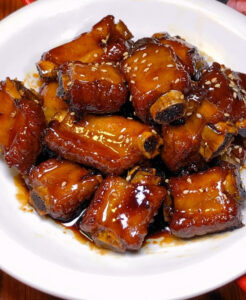The most popular chinese dishes inside and outside of China
What Do Chinese People Really Eat?
The answer might surprise you! What’s famous globally isn’t always what’s popular in China itself – it’s like two different menus living parallel lives.
Take Peking Duck, for instance. While it’s a superstar abroad and absolutely delicious, you won’t find many Chinese families having it for a regular Tuesday night. Why? The preparation is too complex for home cooking, and it’s a rather pricey restaurant dish oftenly reserved for special occasions.
These days, Chinese tastes, especially among younger people, lean heavily toward Sichuan cuisine. It’s all about those bold, spicy flavors that are both accessible and easy to prepare at home or find in restaurants.
So, I’m going to do something fun – share two top 10 lists:
- The most popular for local favorites: What Chinese people actually eat most often
- The most popular for the Global Hits: What the world knows as “Chinese food”
Let’s dig in!
The top 10 chinese favorite dishes
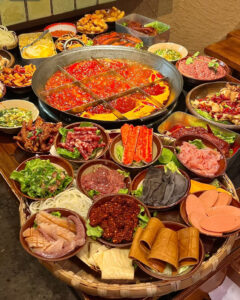 Hotpot
Hotpot
Dating back to the Three Kingdoms period, hot pot (火锅) has evolved into one of China’s most beloved dining traditions. While each region boasts its own unique style, they all share one common thread: the power to bring people together, anytime of year.
Beijing’s traditional hot pot, known as “Shuan yang rou” (涮羊肉), started its own legacy with its distinctive copper pot and clear broth. However, the fiery Sichuan-style hot pot has taken China(or oversea) by storm, becoming so popular that for many, the words “hot pot” now automatically conjure images of numbing-spicy broths and vibrant red seasonings.
Want to create a delicious, healthy home-style hotpot that will warm your body and soul? Let me share my favorite recipes…
 Hongshaorou Red Braised Pork ( 红烧肉)
Hongshaorou Red Braised Pork ( 红烧肉)
This beloved dish was famously Chairman Mao’s favorite, originating from his home province of Hunan. The magic lies in its slow-cooking process, where pork belly is transformed into melt-in-your-mouth meat glazed in a deep reddish-brown sauce. Want to master this iconic dish? Check out my family’s time-tested recipe…
Yu xiang Rousi-Fish Fragrant Shredded Pork (鱼香肉丝) 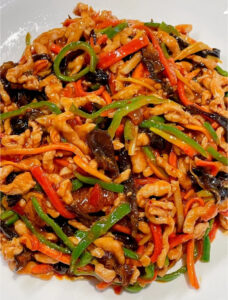
Here’s a fun twist – this Sichuan classic doesn’t contain any fish! The “fish-fragrant” refers to the amazing combination of seasonings traditionally used in Sichuan fish dishes. Legend has it that a clever Sichuan housewife created it using leftover fish seasonings with pork. Ready to try my authentic version?
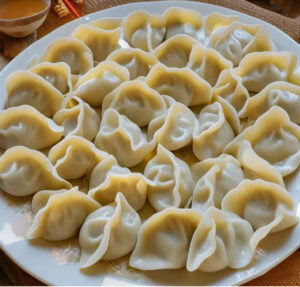 Dumplings – Jiaozi (饺子)
Dumplings – Jiaozi (饺子)
Born from an act of kindness during the Han Dynasty, when famous medecin, Zhang Zhongjing created ear-shaped dumplings filled with warming herbs in order to help the poor combat winter chills. In nowdays ,dumplings have become stars of Chinese festivals, especially during Chinese New Year, where they symbolize family reunion and prosperity.
Here’s a bit of Chinese wisdom that Chinese grandmothers always insisted on: you MUST eat dumplings on the first day of winter, or risk frozen ears! So are you ready to protect your ears and warm your soul with some homemade dumplings? Let me share my family’s time-tested recipe that’s been keeping ears toasty for generations…
Tangcu Paigu – Sweet and Sour Spare Ribs (糖醋排骨)
This dish comes from the elegant kitchens of Jiangsu cuisine. This masterpiece is a harmony of sweet and sour. The secret? A special two-step cooking process developed in imperial kitchens: quick-frying followed by a glossy sweet-sour glaze. Want to recreate this restaurant favorite at home? Here’s my foolproof method…
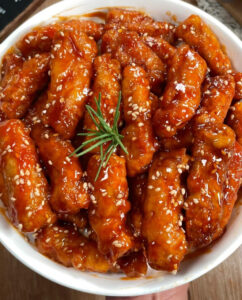 Tangcu Liji – Sweet and Sour Pork Tenderloin (糖醋里脊)
Tangcu Liji – Sweet and Sour Pork Tenderloin (糖醋里脊)
During the Qing Dynasty, Jiangsu chefs perfected this delicate balance of crispy exterior and tender meat. It’s all about timing and temperature – too hot, and you lose the tenderness; too cool, and you miss that perfect crunch. Ready to learn the secrets? Check out my step-by-step guide…
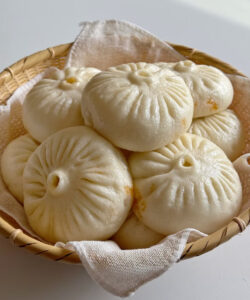 Baozi – Steamed Buns (包子)
Baozi – Steamed Buns (包子)
I can’t help but share a story about this beloved dishes for people inside and outside of China.
During the Three Kingdoms period (220-280 AD), Zhuge Liang, the brilliant military strategist serving as Minister of Defense in Shu Kingdom,led his army to a treacherous river crossing. Violent storms and treacherous waters threatened their journey. Local villagers warned him of a mystical river creature demanding sacrifice before allowing safe passage. The price? Forty-nine human heads.
Zhuge Liang refused to sacrifice his soldiers. Instead,he ordered his cooks to create dough “heads” filled with meat (pork and beef), shaping them to resemble human heads. These offerings were presented to appease the river spirit, and became the predecessors of today’s baozi
Nowadays, baozi comes in countless delicious variations. Want to try some of the most beloved recipes? Let me show you…
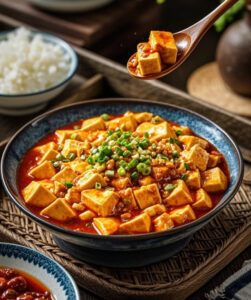 Mapo Doufu (麻婆豆腐)
Mapo Doufu (麻婆豆腐)
In a humble Chengdu restaurant, a cook known as “Ma Po” (the lady with freckles) created magic with what she had left: tofu, ground beef, and doubanjiang. The combination was so spectacular that people began specifically requesting “Ma Po’s tofu.” The key lies in its perfect balance of silken tofu, ground beef, doubanjiang, and Sichuan peppercorns. Ready to try this legendary dish?
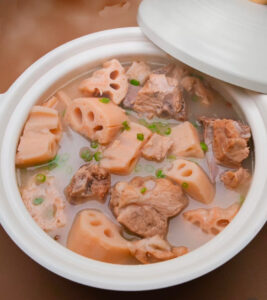 Chinese Soups (汤)
Chinese Soups (汤)
The soup is definitely a creation of China. On a regular Chinese table, there should always be a place for soup, from the simplest tomato egg soup to the heartier chicken soup. These aren’t just soups – they’re liquid gold, packed with thousands of years of Traditional Chinese Medicine wisdom. From healing broths to celebratory bowls, each recipe tells a story. Want to learn my family’s secret soup recipes?
Kourou -Steamed Pork Belly (扣肉)
Kourou, meaning “inverted pork,” is a masterpiece of technique. What sets it apart is the essential use of preserved salty vegetables and its unique upside-down preparation method. The result? Melt-in-your-mouth texture, rich savory flavor, and perfectly layered appearance of fat and lean meat, all coated in a glossy sauce. Ready to try this classic dish?
While these dishes represent what Chinese people eat daily, there’s another fascinating collection of Chinese dishes that have captured hearts worldwide,here are my top 10 most popular Chinese dishes on the global stage
Top 10 chinese dishes for global hits
Beijing Duck: 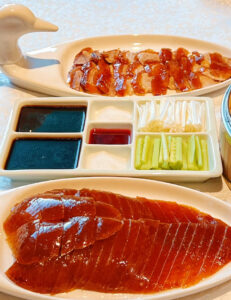
During the Ming Dynasty, this magnificent dish earned its place as the Emperor’s daily indulgence – legend has it he demanded one duck every day! To satisfy the imperial palate, the court’s finest chefs perfected two distinct cooking techniques that are still celebrated today.
The first method, known as “gua lu,” involves hanging the duck over an open fire, similar to barbecue. This traditional technique is still proudly used by Beijing’s famous Quanjude (全聚德) restaurant, one of the most renowned Peking duck establishments in the world.
The second method takes a different approach, roasting the duck with high heat but without direct flame contact. This technique, favored by Quanjude’s great rival, Bianyifang (便宜坊), is considered a healthier preparation as the duck never comes into direct contact with the flames.
The perfect Peking Duck requires crispy skin and juicy meat, served with scallions, sweet bean sauce (甜面酱), and paper-thin pancakes (面皮). While challenging to make at home, I’ve developed a simplified recipe that captures the essence of this imperial dish.
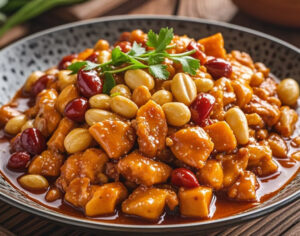 Kung Pao Chicken:
Kung Pao Chicken:
This iconic Sichuan dish traces its roots to an unexpected source – a governor from Guizhou during the Qing Dynasty. Ding Baozhen, who earned the title “Gongbao” (preceptor to the imperial heir), brought his love for spicy diced chicken to Sichuan when he took office there.
A true food enthusiast, Ding discovered that Sichuan cuisine made extensive use of peanuts. He challenged his chef to create something special combining his favorites: tender chicken, fiery spices, and crunchy peanuts. The result was a masterpiece that would become legendary.
As a Sichuan native, I’ve tasted countless versions of Gong Bao Ji Ding – from my grandmother’s kitchen to the bustling streets of Chengdu. After years of savoring and studying this iconic dish, I’m excited to share my authentic family recipe with you.
 Mapo Tofu (麻婆豆腐)
Mapo Tofu (麻婆豆腐)
Another dish that wins hearts both inside and outside China! Check out the ultimate recipe in my local favorites section above.
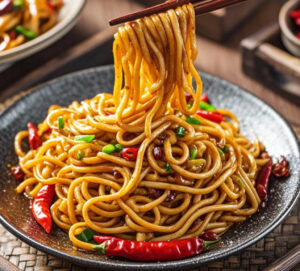 Chowmein (炒面)
Chowmein (炒面)
Chow Mein means fried noodles in chinese, unlike formal banquet dishes, it earned its fame on the streets of China as a beloved comfort food. Much like pizza in the West, its popularity stems from its delicious simplicity and endless adaptability.
In China’s vibrant night markets, you’ll find countless variations of fried noodles, each vendor adding their own special touch:any combination of vegetables and proteins can create a satisfying dish. The noodles themselves are often made with alkaline water (碱水), giving them that distinctive springy texture that holds up perfectly during stir-frying without becoming mushy.
Let me share my favorite chow mein recipes with you…
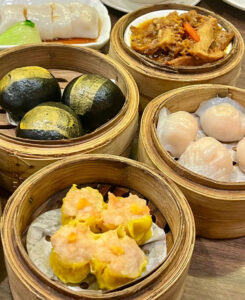 Dim Sum
Dim Sum
This isn’t just a dish – it’s a cherished Cantonese tradition that began in the teahouses of Guangdong. These delicate small bites were originally served as tea accompaniments, evolving into a daily ritual where friends and family would gather to sip tea and share stories. Today, dim sum has become an elaborate weekend ritual, featuring everything from delicate har gow (shrimp dumplings) to fluffy char siu bao (BBQ pork buns).
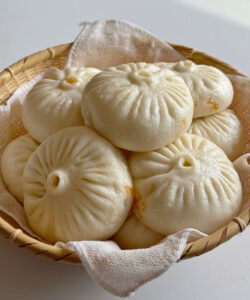 Baozi
Baozi
Yes, these steamed buns are beloved both in China and abroad! See their fascinating origin story in the Local Favorites section above.
 Yangzhou Fried rice
Yangzhou Fried rice
Like many great dishes, Yangzhou Fried Rice (扬州炒饭) started from humble origins. It began with resourceful boat workers along the Yangtze River, who transformed their leftover rice into a satisfying evening meal by simply adding eggs and scallions. Nothing went to waste on those river boats!
But during the Qing Dynasty, cooks began enriching the basic recipe with premium ingredients such as: tendre shrimp, ground pork, jinhua ham, fresh green pea…
Let me share my recipe for this elevated comfort food…
 Sweet and Sour Pork: (咕咾肉)
Sweet and Sour Pork: (咕咾肉)
Known in Cantonese as “Gu Lao Rou” (咕咾肉), this iconic dish has been somewhat lost in translation across the seas. Born in the culinary heartland of Guangdong province, this dish perfectly embodies the Cantonese mastery of flavor balance. While overseas versions often lean heavily toward sweetness, the authentic Gu Lao Rou achieves an exquisite harmony between tangy and sweet notes. The traditional preparation method creates tender, juicy pork pieces wrapped in a light, crispy coating, all enrobed in a sauce that dances between sweet and sour.
Let me share with you my authentic Guangdong-style recipe…
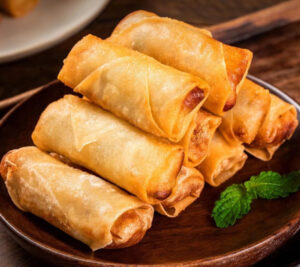 Spring rolls (春卷)
Spring rolls (春卷)
In southern China, particularly across Jiangsu, Shanghai, and Zhejiang regions, spring rolls are more than just golden-crispy treats – they celebrate the arrival of spring, welcoming a fresh start and new beginnings. Their folding technique signifies holding prosperity, and their shape deliberately mimics ancient Chinese gold ingots (金条), making them a delicious symbol of wealth and good fortune.
Despite their rich cultural significance, spring rolls aren’t complicated to make. They come in two classic varieties in Chinese cuisine – sweet and savory – each with its own loyal following.
Let me share my family’s treasured recipes for both versions…
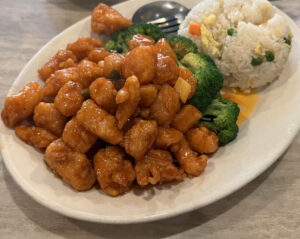 General Tso’s Chicken :
General Tso’s Chicken :
Here’s an ironic twist – one of the most “famous Chinese dishes” isn’t even known in China! This beloved creation is truly a testament to overseas Chinese culinary innovation. While most Chinese mainlanders would draw a blank if you mentioned this dish, it has become a star of Chinese-American cuisine. The cooking technique mirrors traditional Tang Cu Li Ji (糖醋里脊), but cleverly substitutes chicken for pork.
Let me share my version of this Chinese-American. classic…

